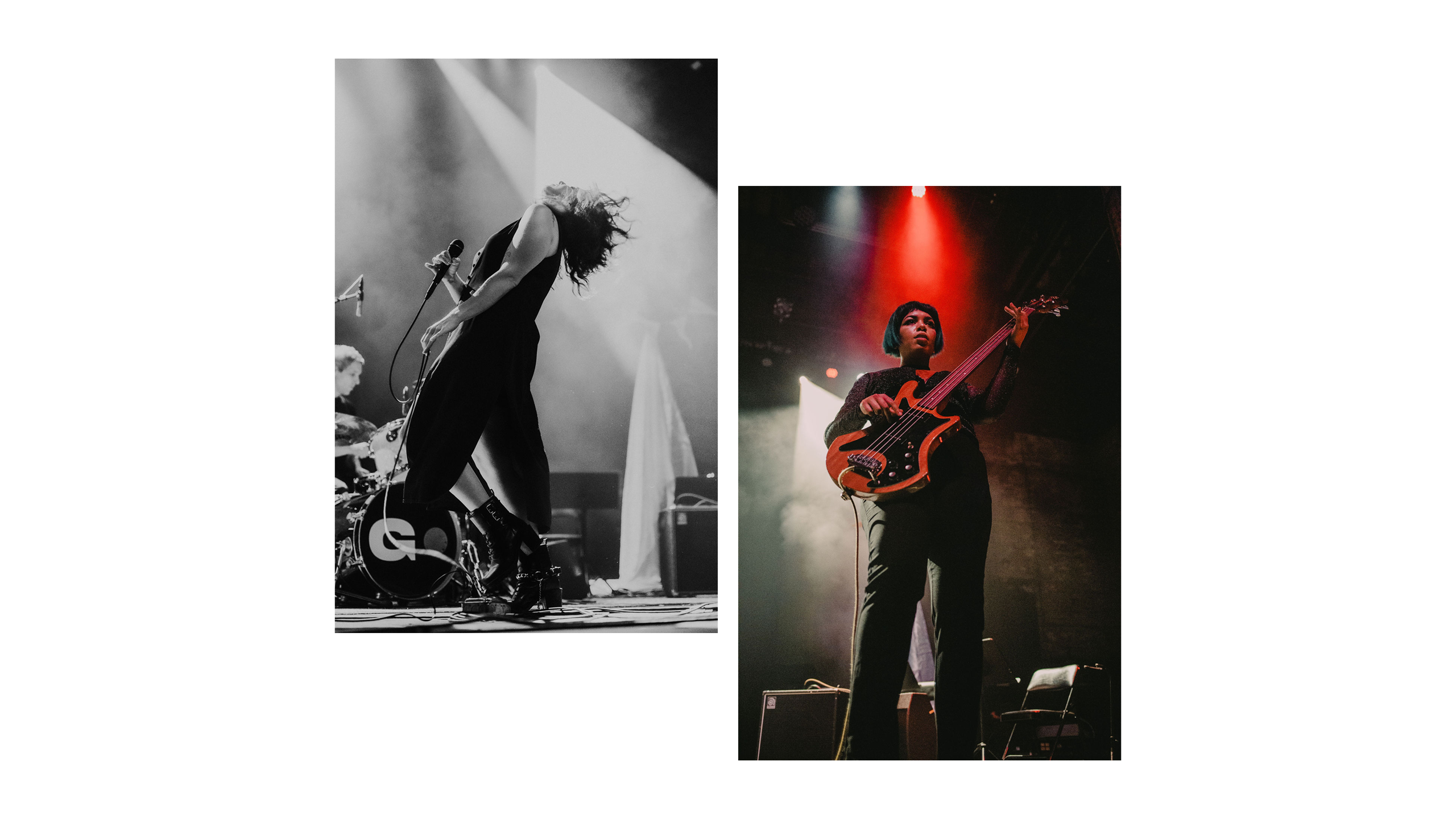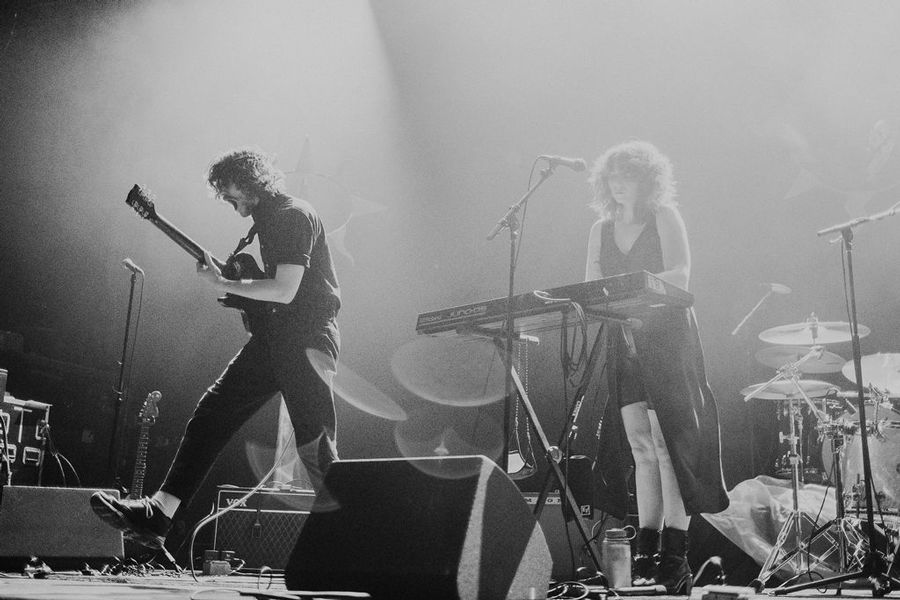Inside Ganser’s Process
Alicia Gaines (BA 2010) and Nadia Garofalo (BA 2010) of Ganser

by Ben Kim Paplham (MFA 2021)
The life of an artist means using what life gives you. For Ganser, a local Chicago band, this meant using an unusually quiet Chicago cityscape as the backdrop for the music video of “Emergency Equipment & Exits.”
It wasn’t originally planned this way, but there was something about the song itself—the ethereal synthesizer, the hollow tom-tom heartbeat, the reverberating timbre of Alicia Gaines’s (BA 2010) vocals—that folded in almost too perfectly with the desolation of the pandemic.
In the music video, we still see the whole band together in their rehearsal studio—Gaines on bass and vocals, Nadia Garofalo (BA 2010) on keyboard and vocals, Brian Cundiff on drums, and Charlie Landsman on lead guitar, together after two weeks of self-quarantining in order to film—but during the video, Gaines eventually leaves the rehearsal and wanders, almost aimlessly, all the way to Harms Woods nature reserve, miles outside of Chicago, to take a break from the world.
“In the same way that a lot of our songs are looking at ugly emotions and making friends with them,” explained Gaines, “this was looking at a bad situation and saying, Well, what can we do?”
This spirit of spontaneous creativity—of having a core concept without being too precious about it and allowing the entire project to evolve—was the guiding light for not just “Emergency Equipment & Exits” but all nine tracks on Just Look at That Sky, which Paste magazine featured on their list of the best 50 albums of 2020. It’s a slow-building process, one that means having a collaborative approach to all aspects of being a band.
“A central concept isn’t necessarily a rule,” said Garofalo. “It’s a broad umbrella that you can use to direct yourself, and the benefit is that everything ends up being pretty cohesive because of it.”

Nadia Garofalo (left) and Alicia Gaines (right). Photos by Hannah Sellers
Nadia Garofalo (left) and Alicia Gaines (right). Photos by Hannah Sellers
Having a core concept for Just Look at That Sky helped intentional and unexpected patterns emerge during its development. The lyrics were often grabbed from the shared Google folder of word pools, random forum posts, and snippets of overheard conversations. Sometimes Gaines or Garofalo would take the lead for a certain song, especially if they knew one of the songs lent itself to one of their voices over the other. But when they did work separately, they found that many of their lyrics still gravitated toward including weather symbolism, adding to the cohesion of the whole album. This is supported by Gaines’s and Garofalo’s visual practices. Gaines studied painting and visual communication, and Garofalo studied architecture while at the School of the Art Institute of Chicago. They’ve worked in film production and design and bring a strong aesthetic sense to the band.
Their cohesion is something that Ganser never takes for granted. One of the benefits to working with a large group is the ability to lean on one another’s specialties, but Ganser leans on one another for much more than that.

Photo by Kirsten Miccoli
Photo by Kirsten Miccoli

Photo by Hannah Sellers
Photo by Hannah Sellers
“You hear about bands, and maybe they get to put out one or two records before the band breaks up, but what you don’t realize is that however many people are in the band, that’s how many lives are overlapping,” said Gaines. “So a lot of it is, like, just keeping in touch. I mean, that was kind of our thing when quarantine first hit was, you know, instead of having a weekly band practice we just had weekly calls just to be like, Are you okay? That’s just as important.”
“When you’re working in a group, there needs to be a good amount of communication. There needs to be moments of conversation with people about what your boundaries are, and what your restrictions are, and what your needs are.”
Even in their rehearsal space, Ganser emphasizes that no one song—and someone’s attachment or reluctance toward it—is above the whole group. One of the fundamental elements of their process is their ability to express concerns with one another, work collaboratively, and understand that everyone has ideas to contribute.
“When you’re working in a group, there needs to be a good amount of communication,” explained Garofalo. “There needs to be moments of conversation with people about what your boundaries are, and what your restrictions are, and what your needs are.”
Gaines agreed: “We have definitely killed darlings. That’s definitely something that we’re open to and I think it’s always in the spirit of—there are four people in this project; we will write more songs. No one song is an important enough hill to die on.”
As for the future, for now Ganser is focused on their plans to tour with their songs from Just Look at That Sky. They’re planning to perform with some of their collaborators—artists like Bartees Strange, Algiers, and Sad13 produced remixes for Ganser’s EP Look at the Sun—and they’re looking forward to the new adventure. There’s no telling what inspiration they’ll find winding through America’s highways and back roads, but they’ll be sure to find it together. ■

